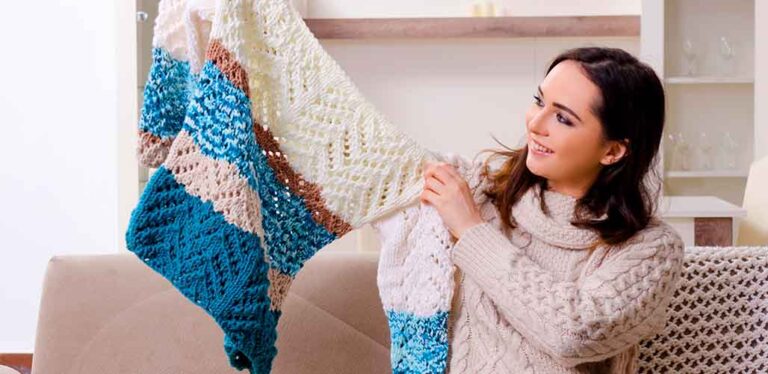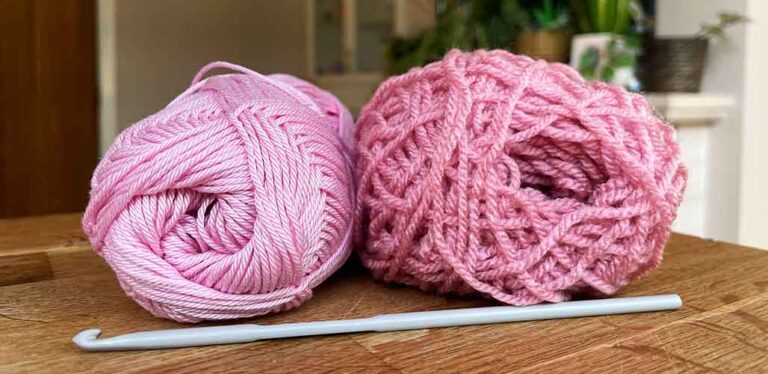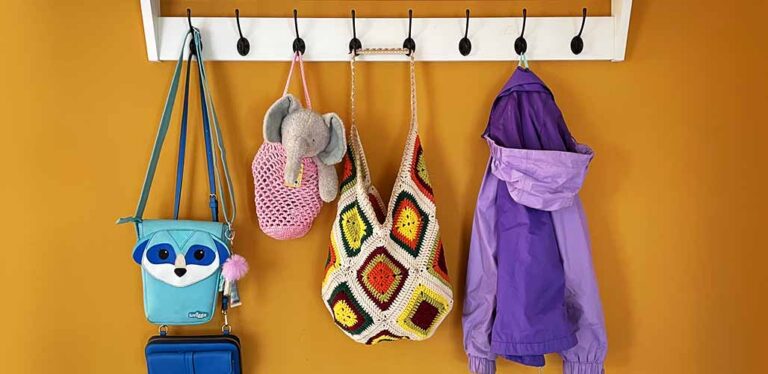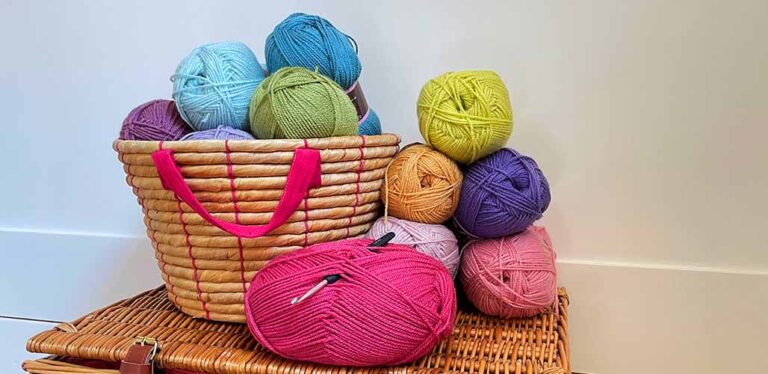Tips for Crocheting with Acrylic Yarn
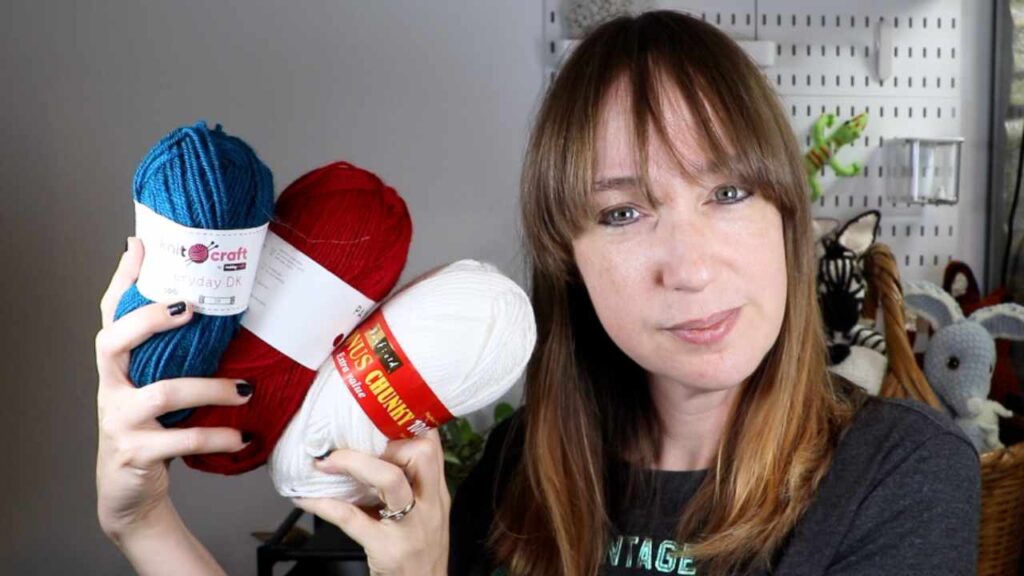
Acrylic yarn has a bad reputation in some crocheting circles. It’s one of the cheaper options as far as fibers go, and can be prone to snagging and snapping, as well as having some other issues with washing. But I maintain that if you use acrylic yarn right, and choose it carefully, it can be a great yarn for crocheting.
To help you get the most out of your acrylic yarn skeins, here are my do’s and don’ts of crocheting with it.
DO stick to your budget
When something is relatively less expensive it can be tempted to get carried away when making purchasing choices. Buying more than you need, or colors you’ll never actually use, just because the price is low. And then you get to the cash register and realise you’ve spent more than you would on fewer skeins of a less budget friendly yarn. Doh!
DO check the texture
Acrylic yarns vary hugely when it comes to how they feel. You don’t want to spend hours working with something that feels uncomfortable against your hands. Nor do you want to pour your heart into a project that is unusable when it’s complete because no one is willing to wear (or hug!) it.
Take the new skein and rub it gently on the side of your face. If there is a loose strand, run it between your fingers and make sure the texture works for you.
DO check for breaks and burrs
Acrylic yarn is notorious for snagging and snapping. Nothing gets me more worked up than being part way into a project, and repeatedly having to cut off and reattach my yarn because it’s broken. And when I have to repair a finished blanket because the yarn keeps fraying, well, don’t get me started! It always pays to inspect the skein before you buy it, to make sure it’s not one that’s likely to be prone to breaking.
DO use a smooth hook
I find the head of a crochet hook varies hugely in quality, not just from brand to brand but with individual hooks within a set. When I’m working with a more delicate or temperamental yarn like acrylic I always check my hook before I begin. Take a strand of yarn and pull it back and forth through the head, making sure no bits of metal, plastic or wood catch on the yarn and stop it working continuously.

DO read the reviews
We all have different thoughts on yarn quality, texture and use, right? I don’t agree with my bestie about some of our favorite yarns, and neither of us is wrong, that’s just personal preference. However, looking at a range of views like you get in reviews online can give you a sense of whether overall this is a good yarn or one that is likely to get you all knotted up.
DO allow for some stretch
If you’re like me and mostly crochet toys, the inherent stretch in acrylic yarn is not the biggest deal. I think what I tend to do is simply use a slightly smaller hook than recommended and tighten up my tension when working amigurumi. But if you are making a garment using a gauge, you’ll need to take into account that this yarn will stretch over time making it slightly bigger than you perhaps intended.
DO check the dye lot
I’ve been caught out a few times when buying, where I’ve picked up a couple of matching balls of yarn only to bring them outdoors and realise they don’t quite match after all. The color name is an indicator of shade, but if you want the yarn to be identical in terms of exact tone make sure the dye batch number matches too.
DO pick your colors carefully
Acrylic yarns come in so many wonderful shades, many of them gloriously vibrant. When planning your project, make sure the colors you’ve picked out go together well by placing them on a white sheet and holding them together.
DO read the label
Yarn labels have so much useful information. And not all acrylic yarns have the same instructions, hook sizes, gauges, or washing instructions.
DO consider pairing it with another fiber
I happily use acrylic yarn solo for the most part, but I do occasionally team it up with a strand of cotton or wool yarn to improve the tension of strength.
DON’T put it on a hot wash
Acrylic yarn is not a fan of the heat. In fact, if you get it too hot it’ll literally melt. It’s plastic after all, isn’t it. Make sure you avoid tumble drying, high temperature washing machine cycles, and ironing.
And I’d avoid using it for anything that might get hot either, like teapot cosies or oven mitts!
DON’T make swimwear with acrylic
I have washed acrylic yarn on occasion, and you wouldn’t believe how sodden the stuff gets. Add that to the natural stretch, and 100% acrylic yarn isn’t something you want holding your modesty in check in a bathing suit…
DON’T buy it just because it’s cheap
I’ve spent a whole bunch of money in my time on yarn that I didn’t need, and haven’t to this day used, because it was cheap. Buying inexpensive yarn as a cost saving measure is a total fallacy if you then don’t actually make use of it.
DON’T be put off acrylic yarn
A lot of people grumble about the downsides of acrylic yarn. And don’t get me wrong, it has plenty. But so do the other yarn fibers, just in different ways.
Acrylic yarn is a great option for plenty of projects, and is bank balance friendly, so it is often worth giving it a go. Who knows, you might just love it!

